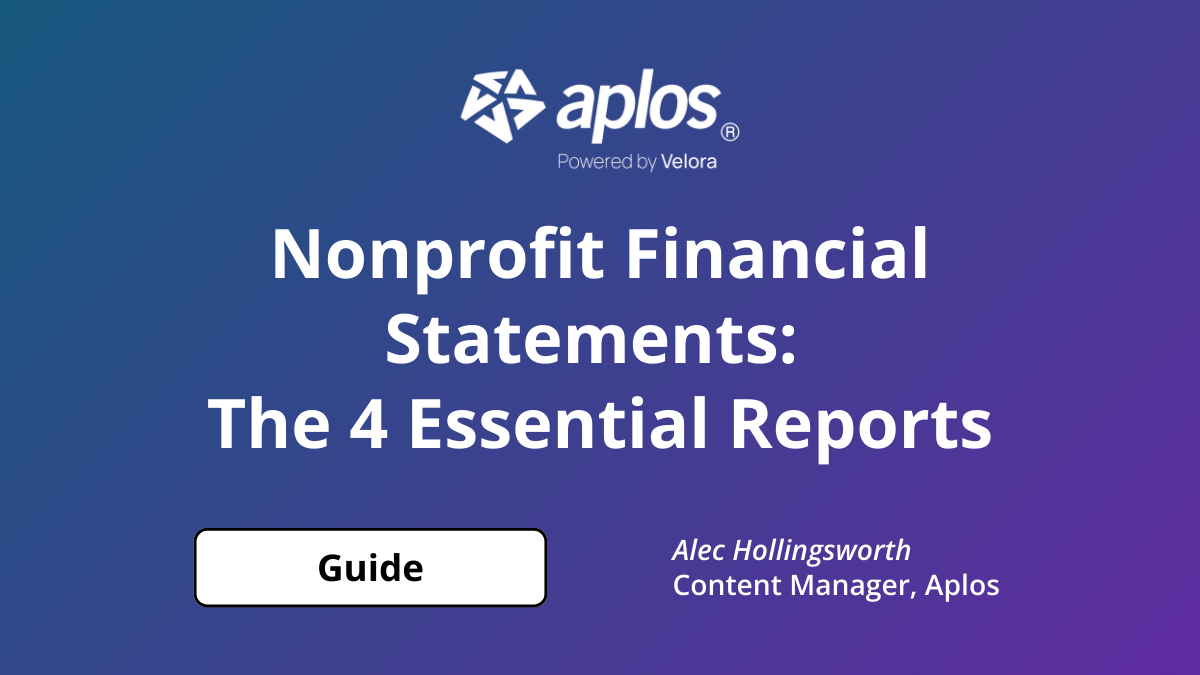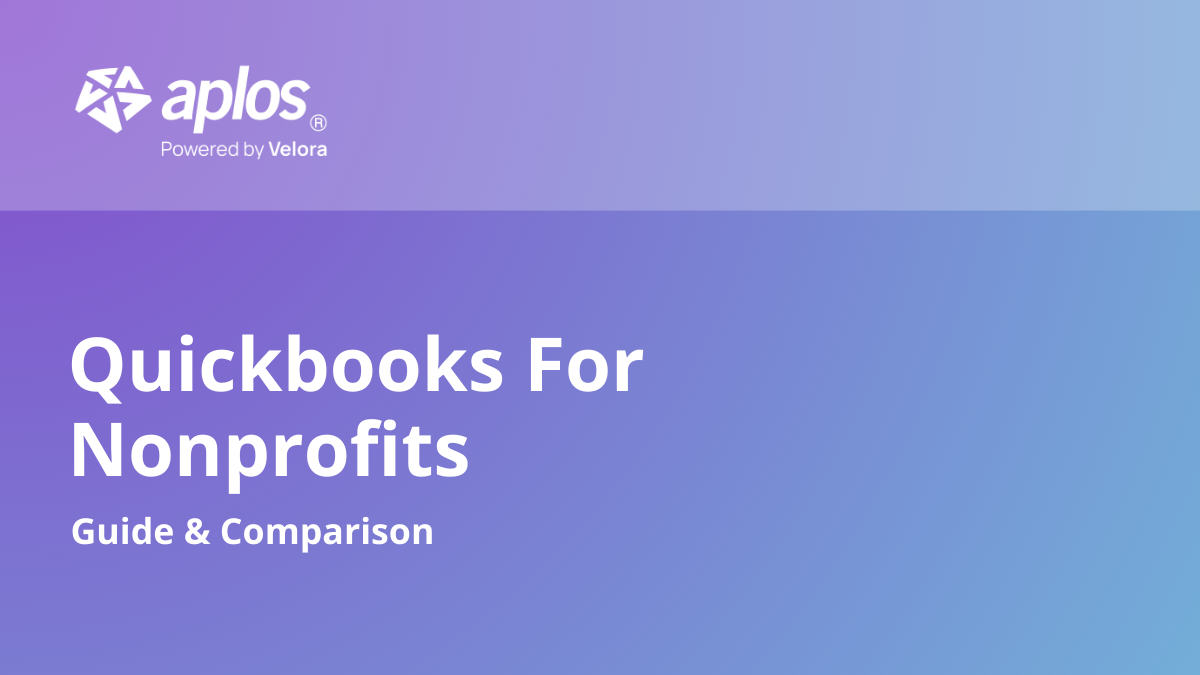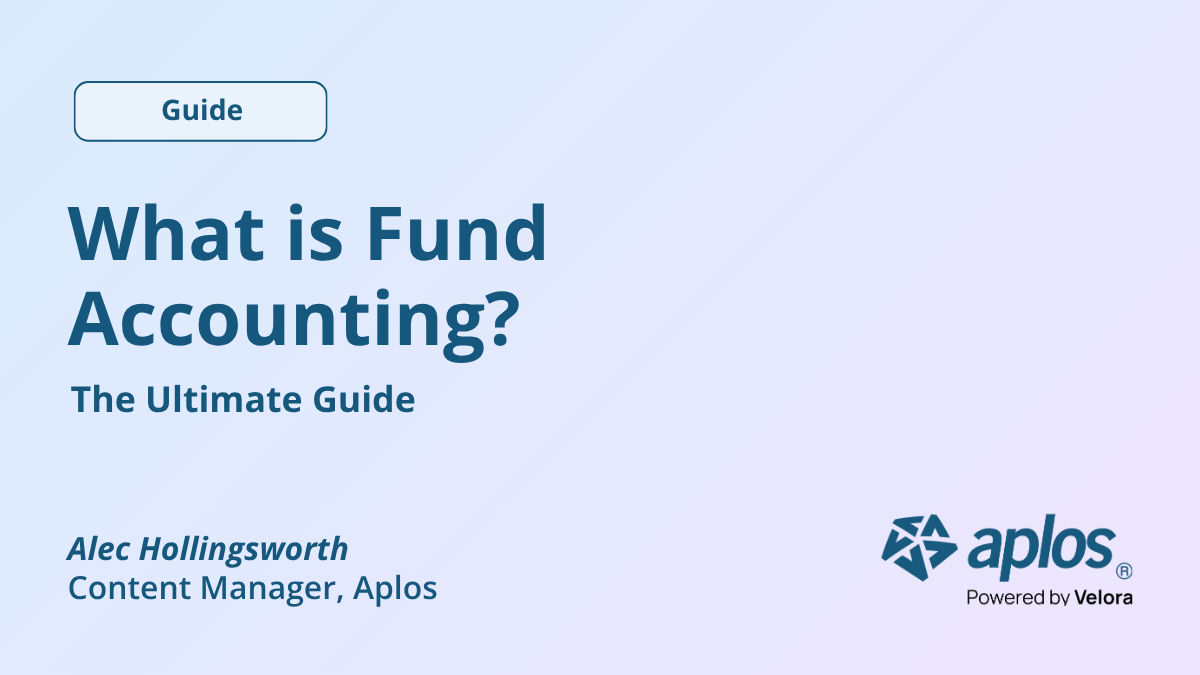
What Is Fund Accounting - The Ultimate Guide

A nonprofit's mission is powered by its resources. But without a clear financial picture, it's impossible to demonstrate accountability or make strategic decisions with confidence. This is where fund accounting provides the essential framework.
For organizations managing multiple grants, programs, and donor-stipulated contributions, fund accounting is the non-negotiable standard for financial integrity. This guide breaks down what fund accounting is, why it's critical for compliance, and how it provides the clarity needed to advance your mission.
Key Takeaways:
- Fund accounting prioritizes accountability over profit.
- Separating funds is crucial for complying with donor and GAAP requirements.
- Generic software creates compliance risks due to a lack of essential fund tracking features.
- Purpose-built software provides the financial clarity needed to manage complex funds.
- Accurate financial data empowers confident, mission-focused decisions.
What Is Fund Accounting?
Fund accounting is how nonprofits keep their money organized. Unlike regular business accounting, which is all about profits, this method tracks where every dollar comes from and where it’s supposed to go.
Think of it like separate jars for different purposes: one for general donations, another for that big grant, and so on.
For example, if someone gives your nonprofit $10,000 but says it’s only for a kids’ program, fund accounting makes sure it doesn’t accidentally get spent on building homes.
Keeping track of donations and donor restrictions is essential for maintaining transparency and accuracy. It’s what keeps nonprofit finances honest and distinct from the for-profit world.
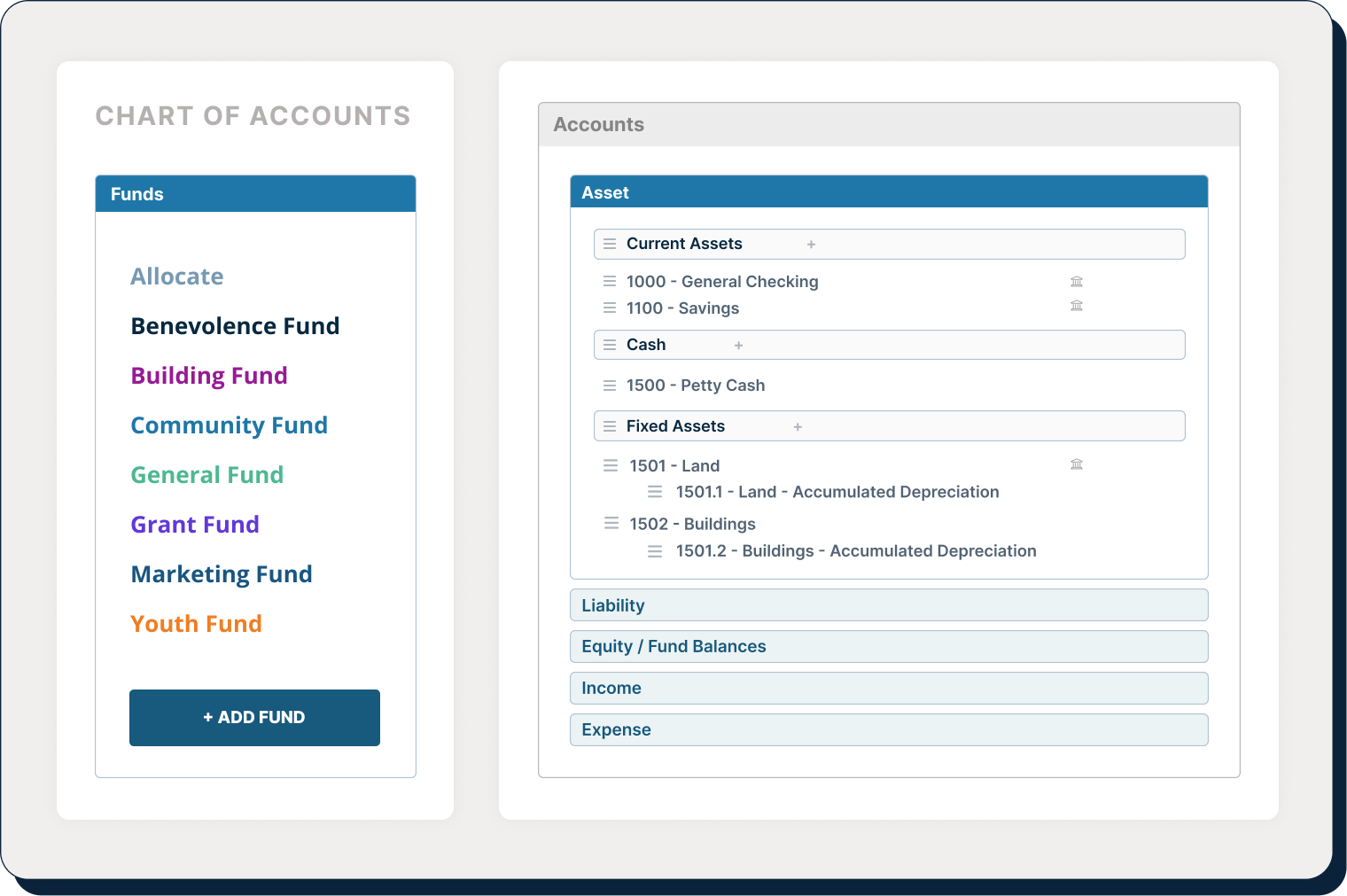
Why Nonprofits Depend On Fund Accounting
It’s more than just a nice-to-have. The National Council of Nonprofits points out that fund accounting helps you meet IRS rules, stick to donor wishes, and pull together solid financial reports. Mess it up, and you could lose trust or even deal with an audit.
Plus, it gives you a clear picture of your organization's financial activities. How much is going to programs, campaigns, or just keeping the lights on? That clarity makes it easier to chat with donors or plan what’s next, ensuring transparency and accountability.
Take a small literacy nonprofit, for instance. A $5,000 grant for new books got tangled up in general funds, and they accidentally used half to spend on rent instead. Fund accounting could’ve saved them the headache and the awkward donor call by properly managing restricted and unrestricted funds.

Types of Funds Explained
Understanding the different types of funds is at the heart of nonprofit fund accounting. Each fund serves a unique purpose, and keeping them straight is key to staying compliant and making the most of your resources. The two main categories you’ll encounter are restricted and unrestricted funds.
Restricted funds are those with strings attached. Donors or grantors specify exactly how the money should be used. For example, a major donor might give $25,000 but require it be spent only on a new community center. These funds must be tracked separately to ensure every dollar is spent as intended.
Unrestricted funds, on the other hand, are the most flexible. These are donations or revenues that your organization can use wherever they’re needed most, whether that’s covering administrative costs, launching new programs, or keeping the lights on.
Compliance with GAAP
The Generally Accepted Accounting Principles (GAAP) provide guidelines for nonprofit financial reporting. GAAP requires nonprofits to report functional expenses, categorizing costs into program services and supporting services for greater transparency.
Program services represent the core mission-related activities of the organization and must be clearly reported in financial statements. Fund accounting aligns with GAAP by categorizing revenue and expenses in a way that reflects donor intent and organizational goals.
If you need help with compliance, Aplos offers fund accounting services to get you there!
Fund Accounting vs. Traditional Accounting: What’s the Difference?
If you’re new to nonprofit finances, you might wonder how fund accounting differs from the for-profit approach. Here’s a quick comparison:
- Purpose: Traditional accounting measures profit and loss, while fund accounting tracks resource allocation.
- Structure: Businesses use a single ledger, whereas nonprofits maintain separate funds for restricted and unrestricted money.
- Reporting: For-profits produce income statements focused on revenue, while nonprofits generate statements of activities that detail fund usage.
Most businesses use the accrual basis of accounting to accurately match revenues and expenses, which differs from the methods used in fund accounting.
This distinction is critical because nonprofits don’t exist to make money, they exist to make an impact. Fund accounting ensures that impact is measurable and aligned with your mission.
How Fund Accounting Software Simplifies the Process
Manually managing separate funds in spreadsheets is prone to error and consumes valuable time. Purpose-built fund accounting software is designed to automate this complexity.
A solution like Aplos, for example, is engineered to handle the specific needs of nonprofits, allowing you to track fund balances in real-time, automate allocations, and generate the compliant, board-ready financial reports you need with confidence and precision.

Financial Statements in Fund Accounting
Financial statements are the backbone of nonprofit fund accounting, giving you and your stakeholders a clear view of your organization’s financial activities. Unlike for-profit businesses, nonprofit organizations prepare financial statements not just for the organization as a whole, but for each individual fund.
This approach ensures that restricted funds, unrestricted funds, and other special funds are all accounted for separately and transparently.
Real-World Example: Fund Accounting in Action
Imagine a nonprofit called “Bright Futures” that supports after-school programs. They receive three funding streams:
- A $50,000 unrestricted donation from a local business, which is recorded in the operating fund. The operating fund supports the organization’s day-to-day activities and provides a stable financial backbone.
- A $20,000 grant restricted to hiring tutors. It’s essential to track expenditures and expenses related to this grant to ensure compliance and proper financial reporting.
- A $100,000 endowment, which is an example of endowment funds. These are permanently restricted funds, established through large donor contributions, and are invested to generate income for specific purposes.
Without fund accounting, these amounts might get lumped together, making it impossible to tell if the grant was used correctly, if expenditures and expenses were properly tracked, or if the endowment principal remained untouched.
With fund accounting, Bright Futures tracks each fund separately, including the fund balance for each fund, which shows the residual amount remaining at the end of the fiscal period. This produces clear reports for donors and regulators.
Common Challenges (and Fixes) in Fund Accounting
Even with tools, fund accounting has its tricky spots. Here are a couple and how to handle them:
Challenge 1: Tracking Restrictions
Fix: A clear chart of accounts is foundational. However, the most effective solution is software built for this purpose. For instance, Aplos allows you to tag every transaction to a specific fund or grant, giving you an immediate and accurate view of your financial position without complicated workarounds.
Challenge 2: Staff Training
Fix: Choose a system known for its intuitive design and user-friendly interface. When your team can easily understand and navigate the software, financial management becomes more accessible and transparent. For more complex needs, seek out vendors that offer dedicated support and training resources, like Aplos.
Challenge 3: Complex Reporting for Boards and Grantors
Fix: A purpose-built accounting platform allows you to generate the specific reports you need in seconds. Solutions like Aplos provide customizable, board-ready financial statements that clearly distinguish between restricted and unrestricted funds. With the ability to filter reports by fund, program, or custom tags, you can easily demonstrate financial accountability to any stakeholder and make grant reporting a straightforward process.
Best Practices for Fund Accounting
- Maintain Separate Funds: Use a purpose-built system to maintain the legal separation between restricted and unrestricted funds. This is foundational for accurate reporting and compliance.
- Establish Clear Procedures: Implement consistent organizational policies for creating budgets, generating financial reports, and preparing for audits.
- Automate for Accuracy: Leverage software to automate transaction management and reconciliation, which minimizes data entry errors and ensures your financial data is precise and reliable.
- Regularly Review Financials: Consistently monitor your financial statements and fund balances to make informed, strategic decisions about how to allocate resources.
- Ensure Transparency: Use integrated reporting tools to effortlessly demonstrate financial accountability to your board, donors, and other stakeholders.

Why Fund Accounting Matters to Your Nonprofit
It tells the story of how your nonprofit stewards its resources to create change. Fund accounting enables organizations to accurately track and report on the services they provide, such as program services and professional services, ensuring these are categorized transparently in financial statements.
Ready to Master Fund Accounting? Start Here
It may seem daunting, but it’s a skill worth mastering. Whether you’re a small nonprofit juggling a handful of grants or a larger organization with complex funding streams, the right knowledge and tools can make all the difference.
Ready to take the next step? Check out Aplos’s fund accounting software to streamline your processes today. Your mission deserves financial clarity, so let’s make it happen together.
Frequently Asked Questions
Why can’t I just use standard business accounting software for my nonprofit?
Standard business software measures profit, not the financial accountability critical for nonprofits. It can't properly manage restricted and unrestricted funds, forcing finance teams into risky manual workarounds that obscure their true financial picture. A purpose-built fund accounting platform is designed for this complexity, providing the clear, compliant reports necessary to demonstrate stewardship and maintain trust with your board.
What is the difference between a 'Fund' and a 'Tag' in fund accounting software?
This is a key concept in modern nonprofit accounting. A 'Fund' typically carries a balance from year to year and represents a distinct pot of money (like a capital campaign or a restricted grant). A 'Tag' is used to track specific activities, programs, or purposes across different funds, offering greater flexibility and detail in your reporting without cluttering your chart of accounts.
What’s the biggest benefit of fund accounting for nonprofits?
Fund accounting ensures transparency by tracking restricted funds separately, building donor trust, and simplifying compliance.
Can small nonprofits use fund accounting?
Absolutely! Even with limited resources, small nonprofits can implement fund accounting using affordable software like Aplos.
How do I start implementing fund accounting for my nonprofit?
Begin by assessing your funding sources and categorizing them into unrestricted, temporarily restricted, and permanently restricted funds. Tools like Aplos can automate this process and guide you through setup.

Our comprehensive closeout services start at $399 per month that needs to be reconciled. Sign up before Jan 1st and pay just $199.50 per month!
Copyright © 2025 Aplos Software, LLC. All rights reserved.
Aplos partners with Stripe Payments Company for money transmission services and account services with funds held at Fifth Third Bank N.A., Member FDIC.
Copyright © 2024 Aplos Software, LLC. All rights reserved.
Aplos partners with Stripe Payments Company for money transmission services and account services with funds held at Fifth Third Bank N.A., Member FDIC.
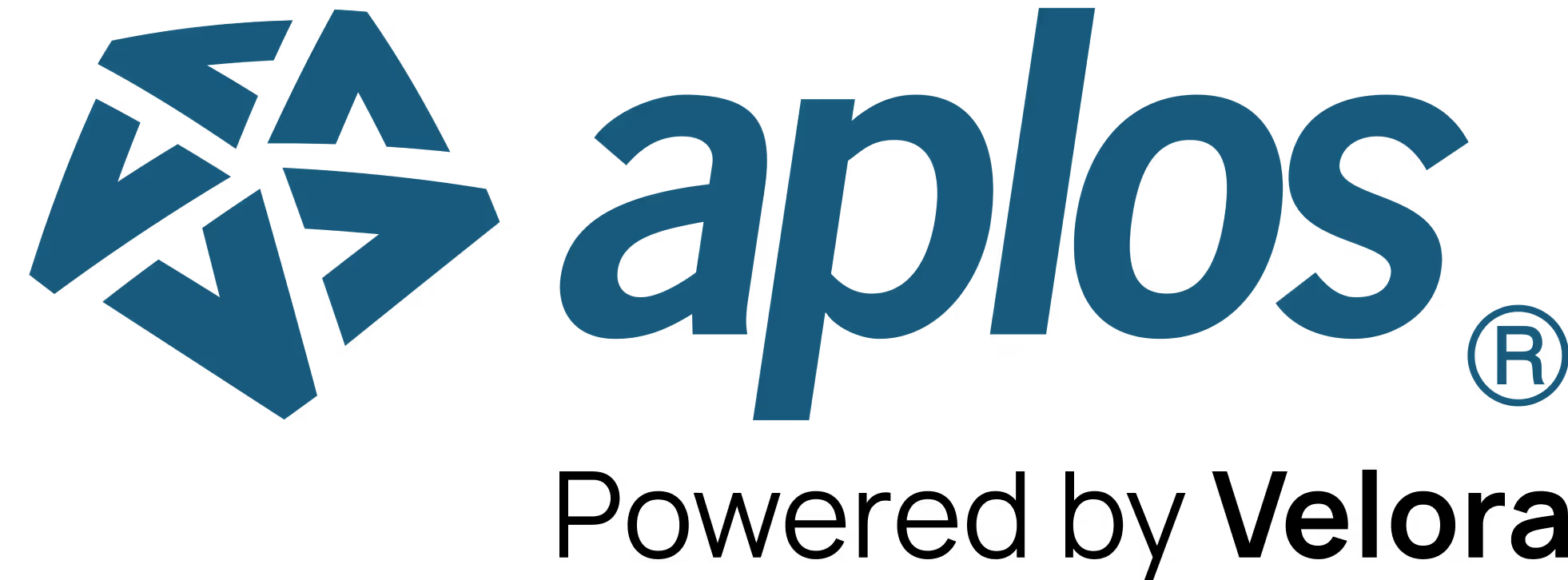


.png)

